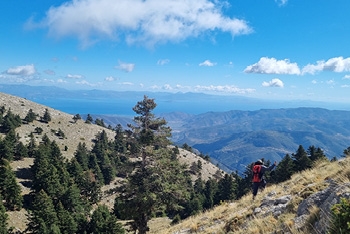A Maple Odyssey in Greece
In September 2024, I travelled with our Curator Dan Crowley (then Tree Conservation Manager) to mainland Greece on a nine-day expedition, covering an astonishing 3100km in search of precious maple seeds.
Why Greece?
Many of us picture sunny beaches and sparkling blue water when we think of Greece. It’s rarer to think of rocky mountainsides, drizzly forests and impressive Acer diversity, but it’s the latter which lured us to explore this corner of the Mediterranean.
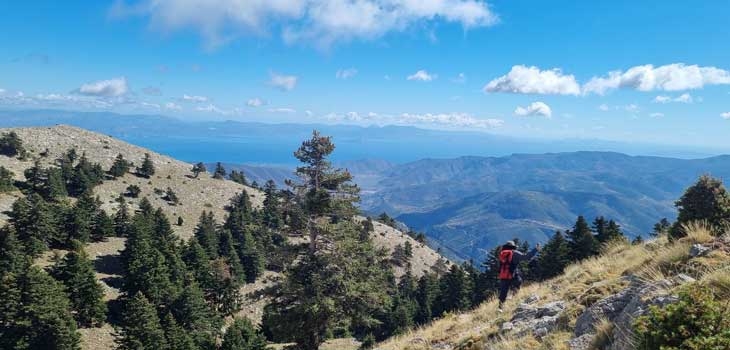
As Westonbirt is the home of the National Collection of maple species, we are always looking to increase its value for research, conservation and education, and sourcing high quality seeds from the wild is crucial to these efforts.
Greece is home to nine species of Acer, including field maple (Acer campestre), Norway maple (Acer platanoides) and sycamore (Acer pseudoplatanus), familiar to us in the UK. However, many are under-represented in gardens, particularly by plants of known wild origin. We set out with the goal of collecting from and recording populations of all nine Greek maple species to increase their genetic representation here at Westonbirt.
Collaboration
Our expeditions are always collaborative, and we work closely with partners in-country to help plan and guide us. We are incredibly grateful to our host from the Greek Forest Research Institute, Dr. Fotios Xystrakis. Not only did he drive us around much of mainland Greece, but he was also an excellent translator, facilitator, with an encyclopaedic knowledge of Greek forest ecology.
Our Tree Highlights
Finding Queen Amalia's maple (Acer hyrcanum subsp. reginae-amaliae on Mt. Parnon and Mt. Taygetos in the Peleponnes was particularly special. This delicate, shrub-like maple has the smallest leaves of all Acer and evolved to grow in picturesque and exposed rocky clearings at high elevations. Unfortunately, we saw evidence of extensive grazing by herds of goats and of the 25 or so trees we found, only three had seed which had survived.
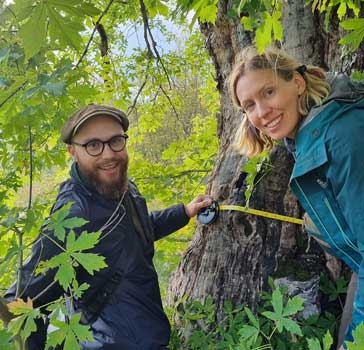
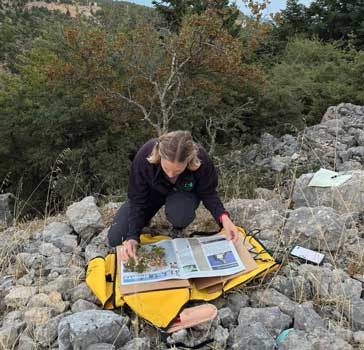
Visiting the beautiful Prespa National Park, which traverses the borders of Albania and North Macedonia, was also memorable. Here we had the misfortune of breaking down but were fortunate to be rescued by a forestry professor, who proceeded to take us to a spectacular old Heldreich's maple (Acer heldreichii) in the cold and misty mountains.
Perhaps our most divine collections were field maple and sycamore from Mt. Olympus, home of the Greek Gods. Nearby, we were also able to see horse chestnut (Aesculus hippocastanum) in its natural habitat, a far cry from the parks and gardens where it is often found in the UK.
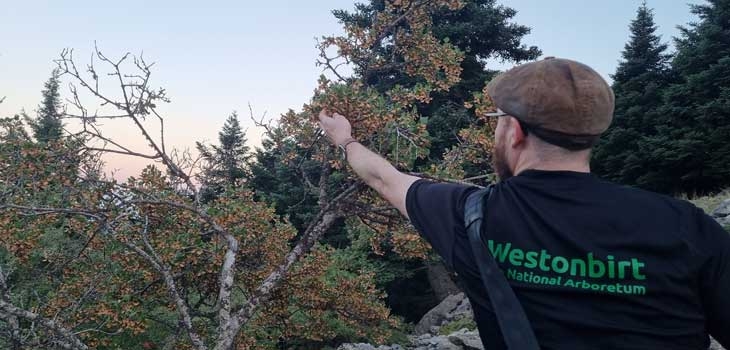
Overall, collecting conditions were difficult, with many of our target taxa suffering from the effects of sustained drought. Thankfully, after much searching, we still managed to collect all but one of our targets, making 18 collections in total of nine taxa (species and subspecies).
What will happen to the seeds now?
On arrival into the UK, samples of the seed were sent to Forest Research at the Northern Research Station in Roslin, to be x-rayed for pests and viability. The seeds are now in the care of our brilliant propagation team, who will sow them in spring, to be planted out in the collection within the next few years.
Duplicate collections of the seed will also be banked in Greece, with plans for ex situ plantings at a Greek Forest Research Institute site.
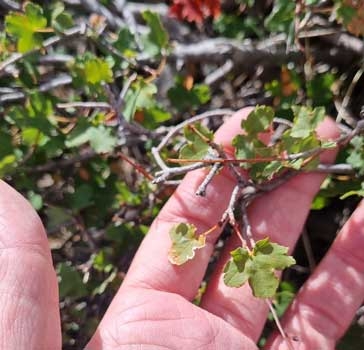
In the case of Queen Amalia's maple, which is rare in the wild and in cultivation, monitoring the trees we grow will help us to understand how to maintain ex situ back up collections within the UK. Material from some of the most southerly populations of field and Norway maple, and sycamore, may also prove valuable for researchers looking to see how they respond to future climatic changes. In addition, observations of the trees in their natural habitats, and their current threats will help to inform updated conservation assessments in the future.
Thanks
We are very grateful to The Friends of Westonbirt Arboretum, for their ongoing support for our tree conservation work, and to our host Dr. Fotios Xystrakis and the researchers who kindly shared their field data.
Conservation trips like this are only possible thanks to the continued support of members and donors like you. Donate today to make a difference...
